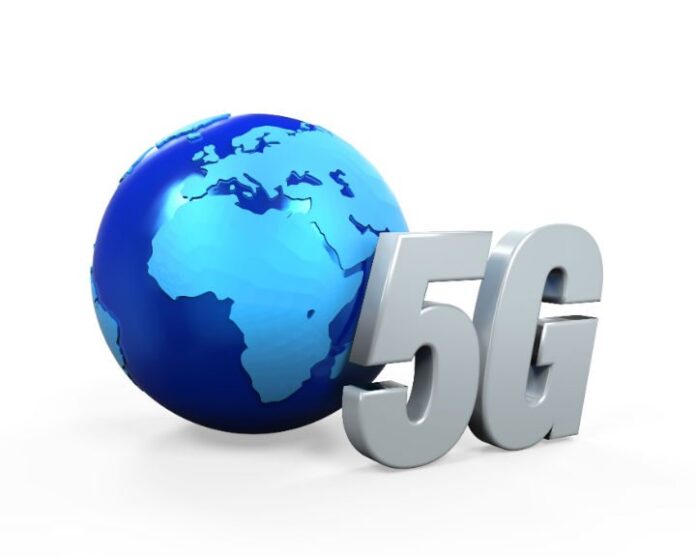Recent announcements from Verizon and AT&T show a strong focus on 5G for U.S. operators
We have written extensively on “5G” in the past few months, including our report on how much 5G is likely to cost to implement in the U.S. We have more research planned in the 5G area over the next few months; from the level of interest we have seen, it is clear the industry is clamoring for more information. Of course, we also wrote that the name “5G” needs to be rethought, but the reality is the industry is moving too quickly for this to happen.
Verizon Wireless has been very public about its interest in 5G and its plans to demonstrate the technology at its headquarters in 2016. AT&T has now said it will trial 5G technologies in Austin, Texas (where I happen to live). The carrier has asked the Federal Communications Commission for an experimental license to trial technologies in the 3.4 GHz-3.6 GHz, 3.7 GHz-4.2 GHz, 14.5 GHz-15.35 GHz and 27.5 GHz-28.5 GHz bands.
The range of spectrum bands AT&T has petitioned for is important. Since the IMT-2020 standards have not been finalized (and are unlikely to be set in concrete until the end of this decade) nor the bands IMT-2020 will use determined, AT&T is asking to test a wide range of options. The goal is clearly to see which work and which ones do not for given applications. Remember that IMT-2020 is going to have to support a wide range of use cases, from mobile video and high-bandwidth streaming to the “Internet of Things.” As such, different bands will be required, in addition to the existing 600 MHz/700 MHz/850 MHz/1.9 GHz/1.7 GHz/2.1 GHz/2.5 GHz bands.
Given that we are in the first quarter of 2016, and two of the largest mobile operators on the planet have announced plans to push forward with 5G tests and trials, it is clear this market is going to move quickly. Assuming IMT-2020 is ready to go by 2019 or 2020, it seems reasonable to expect the first networks very shortly after that. And devices are likely to be available at the same time. This is important because the industry has not always done a good job of coordinating new network technologies with the availability of devices that can actually use that technology.
Why are AT&T and Verizon trialing technologies that have not been standardized yet? Simply to make sure they have a seat at the table and to ensure their needs are met by the IMT-2020 standards. It is 5G squeaky wheel time: make noise now as to what you need and you are likely to get some or all of those requirements incorporated in the standards. The standards bodies are also likely to use the results of AT&T’s and Verizon’s tests and trials in their decision making. And since both operators will have a front-row seat to how 5G is specified and deployed, they are likely to be first-to-market with IMT-2020. In a market this competitive, that is going to be important.
T-Mobile US is not likely to stay on the 5G sidelines for long. Since they will be participating in the 600 MHz auctions this spring and already have an aggressive mobile video product (Binge On), it is clear they will want to move to IMT-2020 as soon as they can. Their engineering execs have made comments about the need to move carefully (true), but this does not mean they will not be testing 5G architectures and technologies later in 2016.
The U.S. operators are therefore going to be front and center on the drive to 5G and IMT-2020, together with some of the larger Asian operators. This is good for the industry and good for the consumer. Questions certainly remain, not least of which is how the operators are going to fund the build out of the new architectures and where the revenues are going to come from. (That is a subject of an upcoming iGR research study.) But it is clear 5G/IMT-2020 is going to move quickly and the development has already started. Waiting until 2018 or 2019 to test or trial 5G technologies and architectures means you are behind.
To use a Super Bowl analogy, 5G has kicked off, the quarterback has the ball and is moving toward to the 50-yard line. A few successful trials and demonstrations will quickly result in a couple of first downs and get the ball past the 50-yard line. Before you know it, we will be in the red zone and looking for a touchdown. Obviously, there are many things that can go wrong along the way (fumbles, interceptions, loss of power in the stadium – it happened!) but the goal is now in sight and the teams know what they have to do. Time to start playing.

Iain Gillott, founder and president of iGR, is an acknowledged wireless and mobile industry authority and an accomplished presenter. Gillott has been involved in the wireless industry, as both a vendor and analyst, for more than 20 years. The company was founded in 2000 as iGillottResearch in order to provide in-depth market analysis and data focused exclusively on the wireless and mobile industry. Before founding iGR, Gillott was a group VP in IDC’s telecommunications practice, managing IDC’s worldwide research on wireless and mobile communications and Internet access, telecom brands, residential and small business telecommunications and telecom billing services. Prior to joining IDC, Gillott was in various technical roles and a proposal manager at EDS (now Hewlett-Packard), responsible for preparing new business proposals to wireless and mobile operators.
Editor’s Note: Welcome to Analyst Angle. We’ve collected a group of the industry’s leading analysts to give their outlook on the hot topics in the wireless industry.

